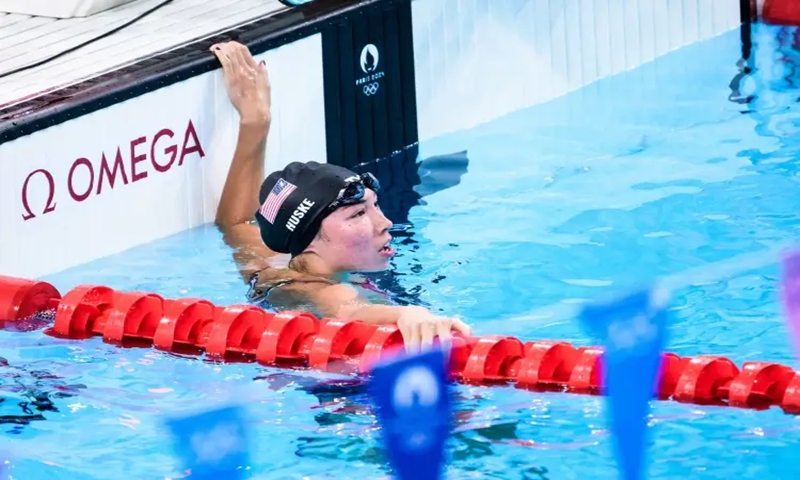
An American swimmer that has a purple discoloration on the face. Photo: Screenshot of live broadcast from CCTV5
Some American swimmers had a purple discoloration on their faces after completing their races in the Paris Olympics swimming events, which has sparked widespread online discussion and suspicion.
It's important not to jump to conclusions based solely on subjective opinions, but this phenomenon has indeed generated significant attention and controversy.
Sports video blogger Fares Ksebati explained in a YouTube video that facial discoloration is often related to heart and lung function, and that the purple hue is due to the intensity of the exercise.
"After high-intensity exercise, energy is converted into heat, and the body attempts to regulate temperature by dilating facial blood vessels, which can result in a red or purple appearance. This can last for a few minutes or longer but is usually temporary and not harmful," Ksebati said.
He also mentioned that the change in skin color during swimming could be influenced by high-intensity exercise and environmental factors.
Ksebati further noted that the discoloration might be affected by rosacea, a chronic but treatable condition.
However, many comments in the video section were skeptical.
A netzine going by the name Elleteo, says "As a medical professional, rosacea is not a convincing explanation. It looks more like a type of steroid analog that produces similar effects but might be able to bypass typical assay tests."
Another netzine named vacheung5218, "It's strange that only these swimmers turned purple this year, while they appeared normal in last year's race photos."
The National Health Commission's rehabilitation therapist Luo Chaofan told Global Times that during high-intensity sports, the body's demand for oxygen increases significantly. If athletes cannot replenish oxygen in time, it can lead to tissue hypoxia, resulting in a purple face.
"This condition is usually temporary and can quickly be resolved once the athlete rests and adjusts their breathing," Luo noted.
However, the American swimming team remained purple even during the awards ceremony.
"Stimulants like ephedrine and phentermine are noted for potentially causing increased heart rate and blood pressure, which can lead to facial redness or purple discoloration. Although these drugs have legitimate uses for treatment and weight loss, they might also be misused to enhance performance," Luo said.
The limited number of doping tests conducted on American athletes has also raised concerns. Some argue that while the American team cites intense training as the reason for fewer tests, this does raise issues of fairness.
"Why do mainly US & AU athletes have purple faces? All swim in the same pool with the same water. Because of race/having pale skin? French swimmers' faces after the games look fine to me, and they are white too. This has to be answered," said a netizen on Weibo, Chinese version of Twitter.




